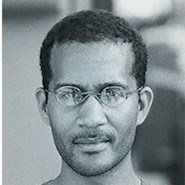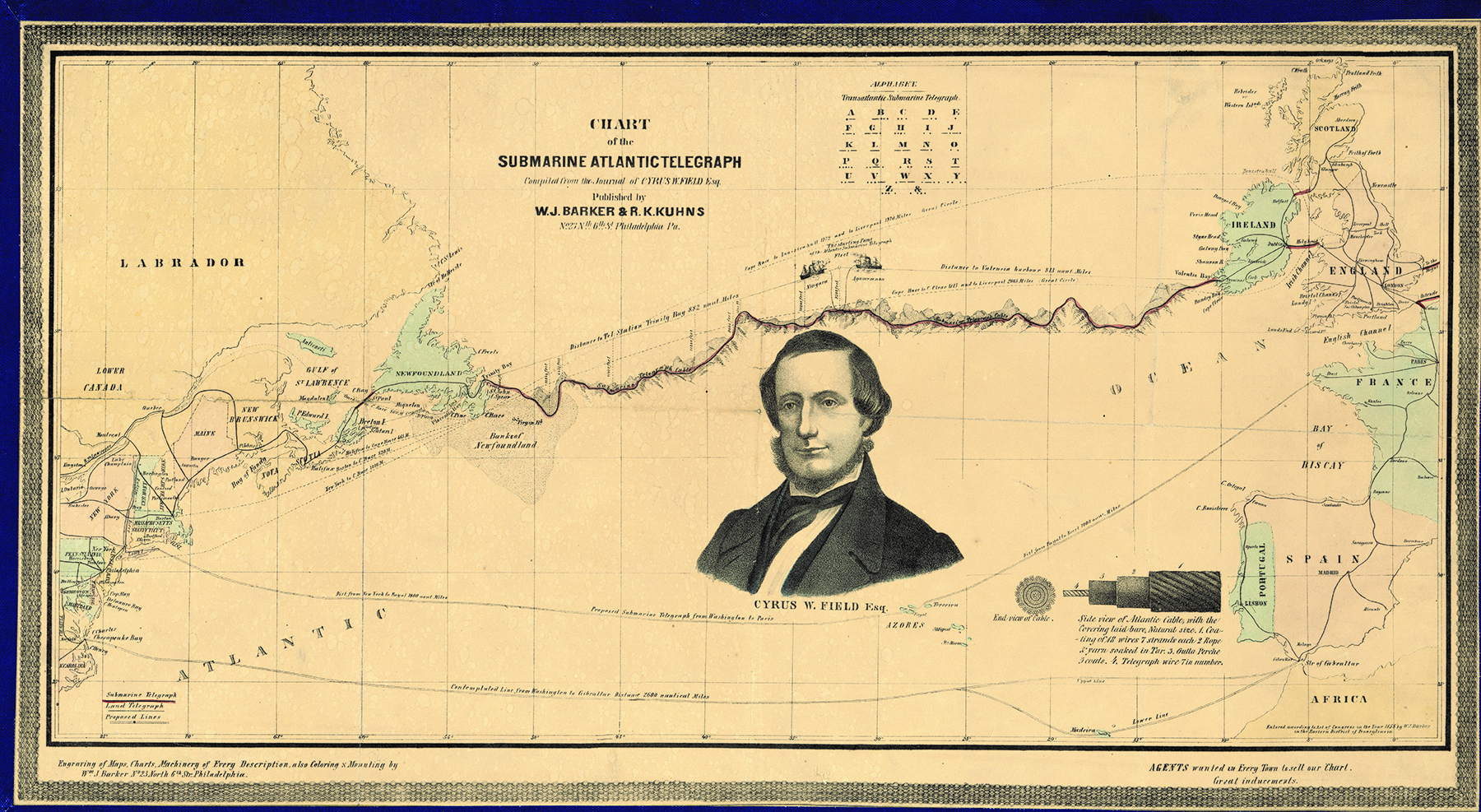
The fast pace of globalization that has knit the world together over the last several centuries depends crucially on a robust communications network. One of the cornerstones of that system was the Transatlantic Telegraph Cable, a daring, costly endeavor completed in fits and starts over the course of more than 10 years in the mid-1800s.
Telegraphs use dedicated wires to send pulses of electric current, which can be received and decoded to deliver messages. “The first functioning telegraph was set up by Francis Ronalds, a distinguished amateur scientist, in his Hammersmith (England) garden in 1816,” wrote historian Gillian Cookson (The Cable: Wire to the New World, Cheltenham, England: The History Press, 2012). But the 8 mi underground line was slow, and Cookson noted that Ronalds could find no takers for his invention.
In subsequent years, however, a variety of entrepreneurs and inventors began to offer glimmers of the world-changing capacity the telegraph offered. These included British brothers John Watkins Brett and Jacob Brett, who laid a 25 mi cable between Dover, England, and Calais, France, in 1850, and American inventor Samuel Morse, who laid a cable across New York City’s East River in 1842. (Morse developed his eponymous code communication system around 1837.)
The credit for the initial idea for a trans-atlantic line usually goes to English electrician Frederic N. Gisborne. According to writer Thomas A. Dames, Gisborne, who lived in Canada, petitioned the Canadian government around 1850 to build a telegraph that would cross Newfoundland and then travel underwater to the North American mainland at Nova Scotia (“The Transatlantic Cable,” The Military Engineer, November-December 1965, Vol. 57, No. 380, pages 401-403). This was the first step in a larger idea to cross the Atlantic Ocean.
The search for an investor would lead Gisborne to paper magnate Cyrus West Field, one of New York’s richest men. Field, an Anglophile, saw the Atlantic cable as not only a great business opportunity but as “a means of deepening international understanding and harmony, especially between the two countries he loved, the United States and Britain,” according to Cookson. Field would ultimately sideline Gisborne and remove him from the project; Field himself would see the work through to the end. But the end proved a lot harder to reach than he anticipated.
The difficulties of crossing Newfoundland, Canada, from St. John’s to Cape Ray hinted at the challenges that would lay ahead when Field attempted to cross the ocean. The Canadian terrain was, as Cookson described it, 300 mi of “unmapped and inhospitable wilderness impenetrable even on horseback. The forest was dense, the terrain marked with rocks and marshes, the climate foggy. Local fauna included bears and wolves.”
The work was expected to last a few months; instead it took two and half years.
As recounted by Cookson, Field later wrote he had underestimated the job: “It was a very pretty plan on paper. … Not one of us had seen the country or had any idea of the obstacles to be overcome. ”
Field’s efforts soon attracted investors from both sides of the Atlantic and key scientists and engineers, including Morse, project engineer Charles T. Bright, and one of the greatest physicists of the 19th century, William Thomson — later known as Lord Kelvin.
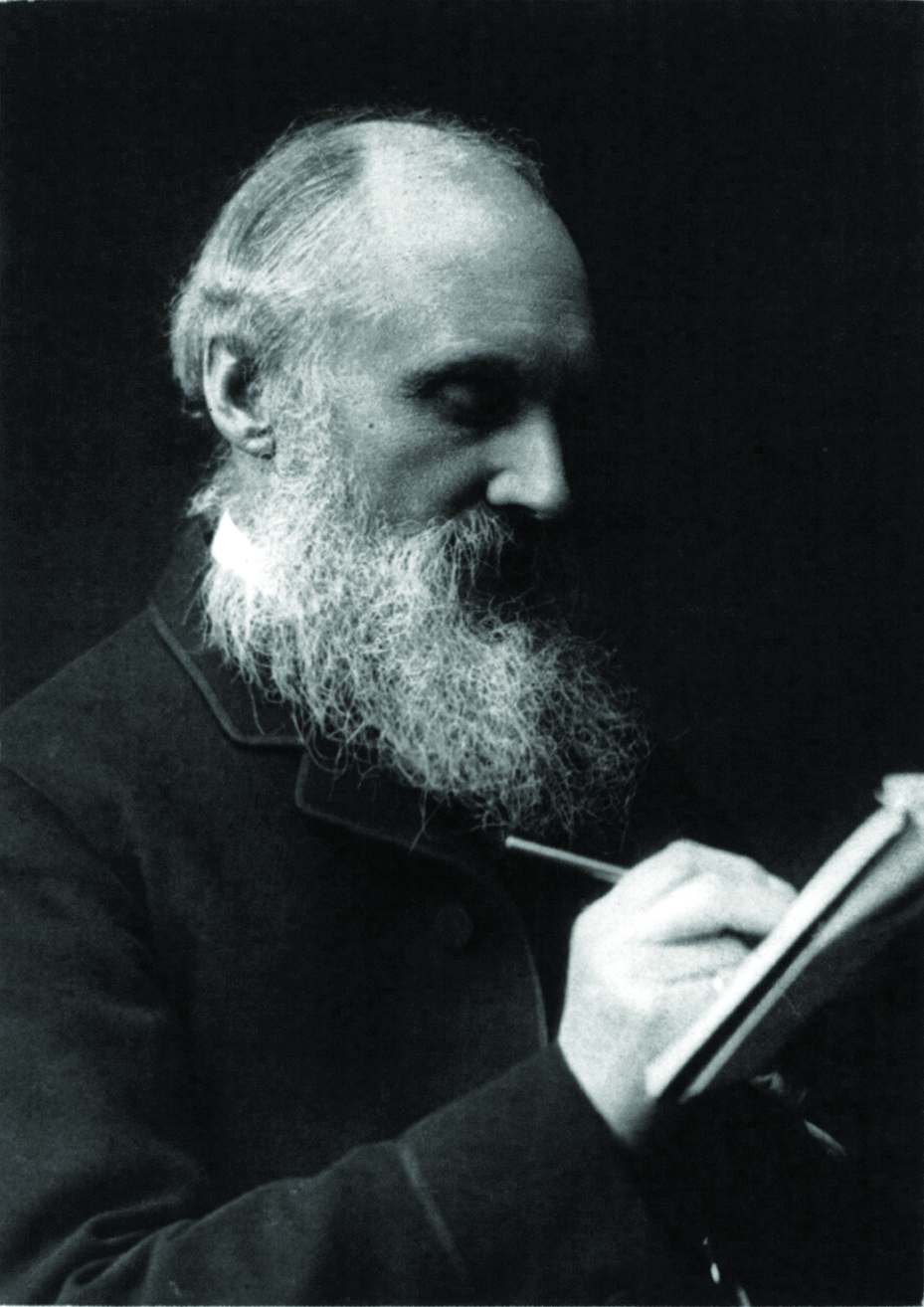
By 1856, according to Cookson, there were dozens of submarine telegraph lines connecting the British Isles, including Ireland, with London. But the distances were short. No one had attempted anything on the scale of the Atlantic crossing. Morse had laid out four questions:
- Could an electric signal be sent across such a great distance?
- What was the nature of the ocean bed?
- Could a cable be manufactured to work at the depth required?
- How much was all this going to cost?
Little of the Atlantic had been surveyed; this was an era when, according to Cookson, to measure ocean depths “a cannon ball was dropped on the end of a long line.” But a survey conducted by U.S. Navy Lt. Matthew Fontaine Maury, head of the Naval Observatory in Washington, D.C., focused on the closest route to bridge the ocean — a 1,600 nautical mi stretch between Ireland and Newfoundland.
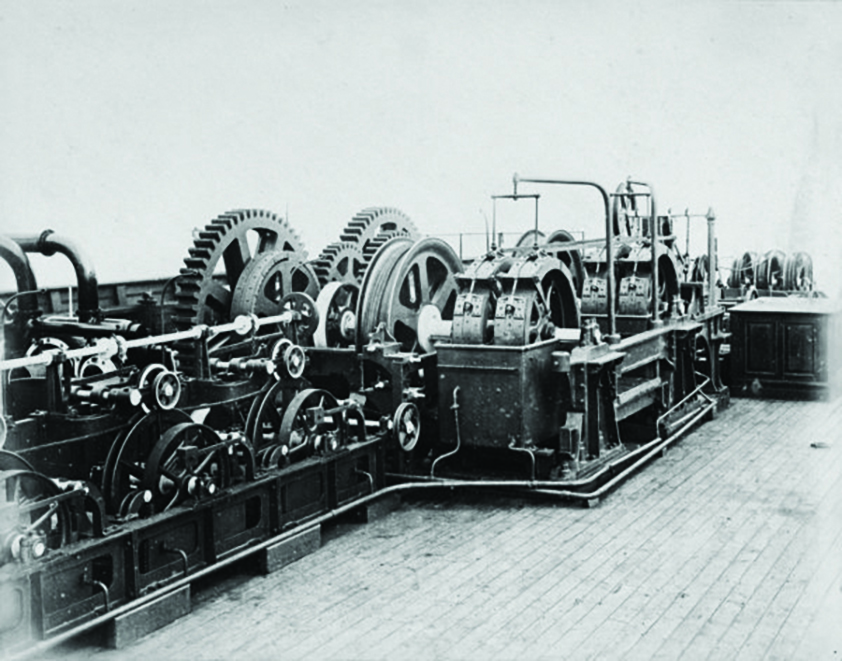
Between the two was a “beautiful plateau,” wrote Maury (as detailed by Cookson), about 2 mi deep, a sort of Goldilocks zone that was “neither too deep nor too shallow; yet it is so deep that the wires, but once landed, will remain forever beyond the reach of vessels’ anchors, icebergs, and drifts of any kind, and so shallow that the wires may be readily lodged upon the bottom.”
To build a line that could span that length, Field required the expertise (and the capital) of the British, who were well versed in building submarine cables, though at much shorter distances. In 1856, Field and British investors started the Atlantic Telegraph Co., in London. The U.S. Congress also pitched in a multiyear subsidy reaching as high as $70,000 per year, as well as ships. It was a moment of optimism. Cookson cited an editorial in London’s The Times that claimed the challenges of the transatlantic cable would be solved. The cable would prove another showcase for “the certainties of the scientific age, the unceasing march of technological progress, and the might of Victorian Britain.”
The first challenge was developing a cable capable of transmitting a signal across the ocean. Field recruited Edward Orange Wildman Whitehouse, a British surgeon who dabbled in the field of electricity, as chief electrician. According to Cookson, Whitehouse devised a cable comprising “seven copper strands … insulated with a (triple) layer of gutta-percha, so that it measured three-eighths of an inch in diameter. The core, surrounded by jute yarn saturated with tar, pitch, boiled oil, and common beeswax, would be made by the Gutta Percha Co.”
Gutta-percha was the “wonder material” of the age — a natural latex derived from the gutta trees in Malaysia. It was virtually imperishable, could insulate the line while submerged, and, Cookson wrote, could be shaped while hot but remain flexible as it cooled. From there, the line would be “armored” with seven wires of charcoal iron bright wire to protect the line as it was being “paid out” and to prevent “accidental harm by anchors or fishing lines or rocks once it was laid,” she added.
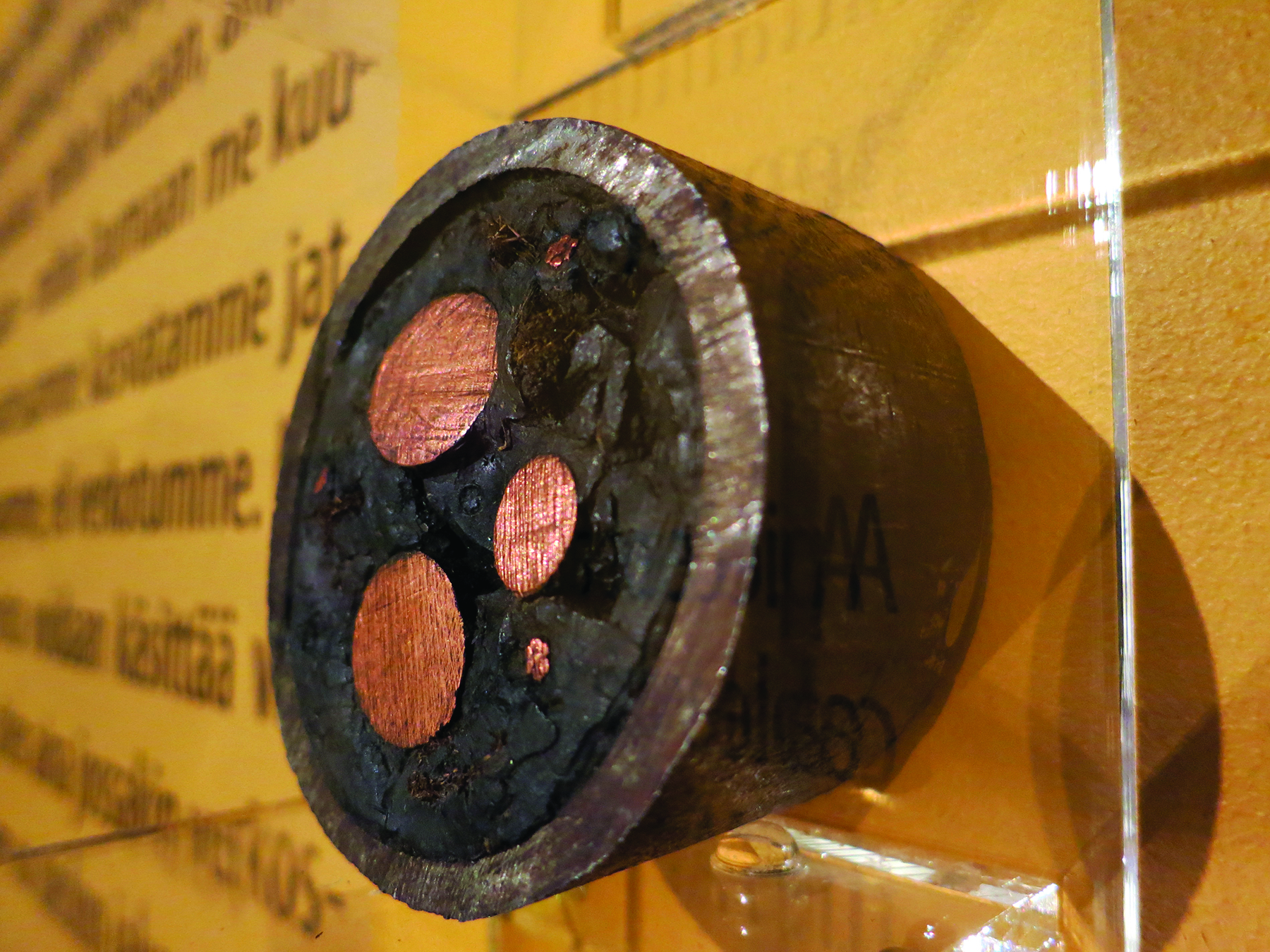
The transatlantic cable was insulated with the “wonder material” of the age: a natural, imperishable latex called gutta-percha. (Wikimedia Commons/Trogain)
Designers had to get the weight of the cable just right. It could not be too heavy, Cookson wrote, “for when laying started there would be a length of up to 5 or 6 miles of cable between the ships, a huge mass not immediately supported by the ocean bottom.” On the other hand, she continued, “the cable must not be too insubstantial, for it had to sink to the bottom under its own weight. … A line that was too light would reach the bottom, but it would not be laid straight, as currents would move it from its direct route and introduce damaging kinks.” The final weight of the line was 1 ton per mile.
But even when insulation was properly constructed, Cookson wrote, and the cables well made, “undersea cables simply did not function as expected. Messages would not pass down the line at anything like an acceptable speed without breaking down into a chaotic jumble. This electrical phenomenon came to (be) called ‘retardation of the signals,’ sometimes known as ‘induction.’ Retardation was at the root of problems with long cables, and until it could be understood and its effects overcome, the Atlantic cable could never work.”
Another problem was the capacitance effect, which occurred because the cables could not only transmit an electrical signal, but also store it, which over time interfered with the signal itself. Further, Thomson had developed the law of squares, which indicated that the decay in signal quality “increased with the square of the distance traveled,” wrote David Lindley (Degrees Kelvin: A Tale of Genius, Invention, and Tragedy, Washington, D.C.: Joseph Henry Press, 2004). Further, he added, Thomson concluded that if “the diameter of both the conductor and the insulation of a cable were increased in proportion to its total length, then the signal delay (quality) and what Thomson, groping for technical language to describe the clarity of the signal, quaintly called the ‘distinctness of the utterance,’ would remain the same.”
While Thomson and others worked toward a solution to the challenges of ensuring an adequate signal, Field had more immediate concerns. The first laying of the cable was planned for summer 1857. Because one ship was not large enough to carry all the cable, two ships were used — an American steam-powered frigate, the Niagara, and a Royal Navy steamship, the Agamemnon.
The Agamemnon was fitted with 10 anchors, which were designed, Cookson wrote, to “stop any motion while the ‘ponderous coils’ were transferred into the hold.” To even reach the ship, the cable was carried “across supports fixed on 10 barges between factory and ship” and wound into a single coil measuring 12 ft in height and 45 ft in diameter.
The ships set sail from Valentia, an island off the west coast of Ireland, on Aug. 6, 1857. Engineers decided that it would be best to string the cable in one direction, east to west, so they could always maintain a connection with land. The Niagara went first, and the Agamemnon followed when the Niagara had paid out all its cable.
The cable had to be laid at a speed consistent with the speed of the ship. But at one point the cable began moving about 50 percent faster than the ship. “To stop the overrun of the cable the duty engineer set the brakes on the paying-out machine,” wrote Dames. “At that instant the Niagara was in a wave trough, and when she rose on the next crest the cable was broken by the sudden increase of weight caused by its pull from the ship.”
The second cable-laying attempt took place the following summer, in 1858. William Everett, the Niagara’s former chief engineer, redesigned the brake on the paying-out machine to be smaller and lighter and feature a self-regulating function “which could release quickly to prevent the cable from snapping,” wrote Cookson.
This time the line was laid from the middle of the ocean — one advantage, Cookson wrote, was that the vessels could communicate with each other. But the Atlantic proved too much. A June 10 storm almost destroyed the Agamemnon, and from there the cable suffered a series of electrical and mechanical setbacks and eventually snapped. Field was at wit’s end. Cookson recounted Field’s brother Henry writing, “The strain on the man was more than the strain on the cable, and we were in fear that both would break together.”
Nevertheless, Field and his investors and engineers persevered. The ships set out on July 17, 1858, for a third — and successful — attempt. The Niagara reached Newfoundland on Aug. 5. The Agamemnon reached Valentia on the same day. The connection was finally made on Aug. 16. In all, according to Dames, the Niagara laid 1,030 nautical mi of cable and the Agamemnon laid 1,020 nautical mi.
“Europe and America are united by telegraphic communication. Glory to God in the highest, on earth peace, goodwill towards men,” was the first message sent from the board of directors in London to associates in the United States. Queen Victoria then sent a 98-word note of congratulations to President James Buchanan; the message took 16 hours to transmit, according to Cookson. “Once the White House had convinced itself this was not a hoax,” she added, “the president penned a reply of 149 words, sent in 10 hours.”
But the success of the cable was short-lived; by Oct. 20 the line was dead. When it was examined, numerous problems were discovered. Whitehouse had used too much current for the insulation to handle. The cable had been made in 1857, Cookson noted, and sat for a year between its manufacturing and laying. It was stored out in the sun, damaging the gutta-percha. Field, lauded as a hero earlier in the year, was now derided.
What’s more, Field was out of funds. The Atlantic Telegraph Co. had spent ₤465,000 (roughly equivalent to U.S. $69 million today) and had nothing to show for it. Still, there was a growing sense that the solutions were close — and worth the financial push. Over the next several years, according to Dames, other cables were laid, including a 1,535 mi line from Malta to Alexandria, Egypt, and a 1,400 mi cable across the Persian Gulf. The United States completed a transcontinental telegraph line in 1861.
Meanwhile, Thomson, working with telegraph engineer Fleeming Jenkin, developed an automatic sending device and, along with telegraph engineer Cromwell Fleetwood Varley, developed a method to allow two-way communications along a telegraph. “The problem of ‘retardation of the signals’ was effectively solved,” wrote Cookson.
Thomson also developed a mirror galvanometer that “used a tiny magnet fixed to a mirror, both suspended by a silk thread, to enhance weak incoming signals by light and reflection,” Cookson wrote. This revolutionized “long-distance signaling and electrical testing on board ship,” she wrote.
By 1865, there was finally new British financing for Field to press ahead with another expedition. He just needed a new cable and a new ship. The former, according to Dames, was a 1.1 in. diameter purer copper wire that was “covered by gutta-percha and hemp-encased steel wires. . . . The new cable could support 11 mi of its own weight in the water and was 2 1/2 times as strong as the previous one.”
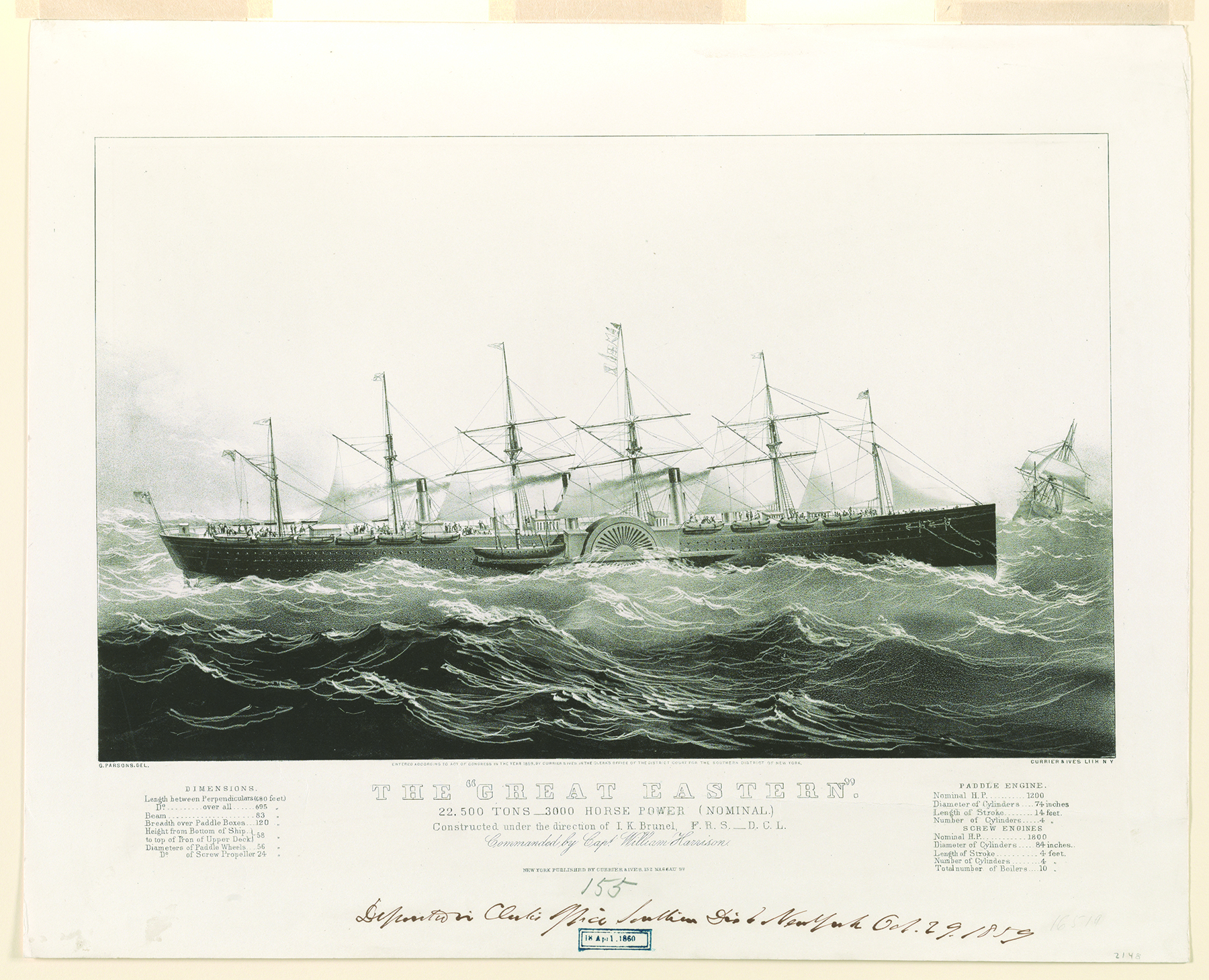
As for the latter, Field purchased a vessel called the Great Eastern, which, at 692 ft long, was nearly twice as long as and five times larger (by tonnage) than any other vessel in the world. The Great Eastern was big enough to stow the entire transatlantic cable onboard. The vessel — designed by engineering legend Isambard Kingdom Brunel, along with John Scott Russell — set sail in 1865 and laid two-thirds of the cable before the line failed again. This time, a fault was found in the cable, and the ship — during attempts to retrieve it — passed over it and damaged it.
A year later, at last, the cable was successfully relaid, and more importantly, it worked. Ships required a week or two in the mid-1800s to cross the Atlantic, according to the website transportgeography.org. According to the International Cable Protection Committee, messages could be transmitted at a then-astonishing speed of eight words per minute.
Field was vindicated for his ability to hold the project together, and the boom in global communication was on. According to historian Simone Müller, in 1866, the first lasting Atlantic telegraph cable — and thus the first long-distance cable — had been laid, and its success set in motion a true submarine cable fever. Cable after cable was run, and by the 1870s, telegraphic lines linked Europe to most of the globe, including India and the rest of Asia, Australia, and South Africa (“The Transatlantic Telegraphs and the ‘Class of 1866’ — the Formative Years of Transnational Networks in Telegraphic Space, 1858-1884/89,” Historical Social Research, January 2010, Vol. 35, No. 1). Many modern, fiber-optic cables spanning the Atlantic still connect between Ireland and Newfoundland.
And Field is now venerated as much for his multidisciplinary project leadership as his tenacity. Cookson says, “Field’s essential gift, apart from his persistence, was an ability to find the very best, the most useful, talent on offer. The network he built embraced engineers and scientists, financiers and merchants, naval officers and politicians, British and American. The result was the extraordinary story of the Atlantic cable, a feat outside its time.”
This article first appeared in the December 2020 issue of Civil Engineering.



